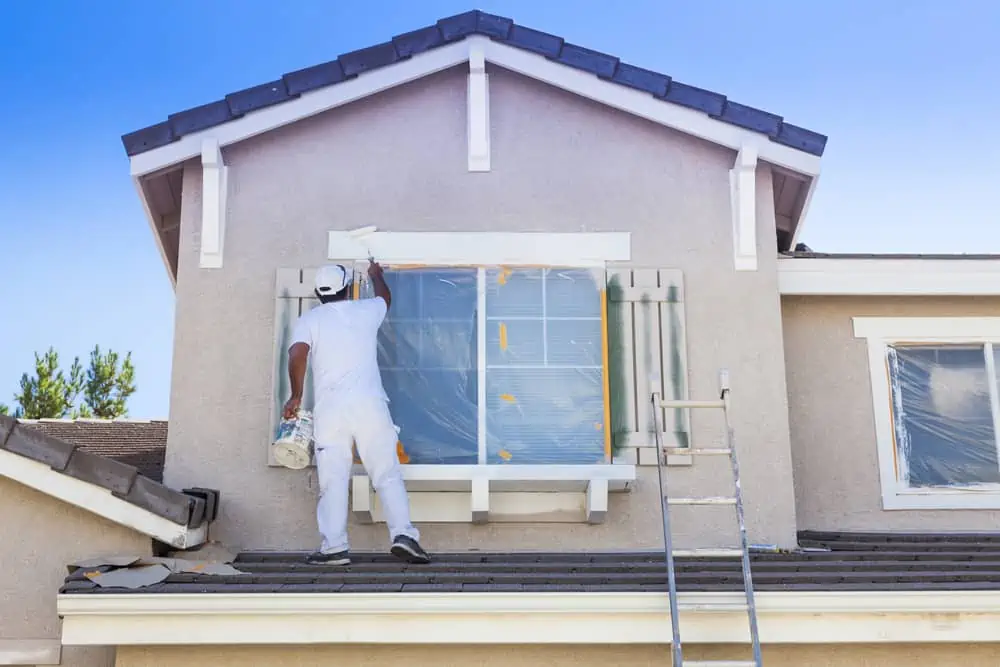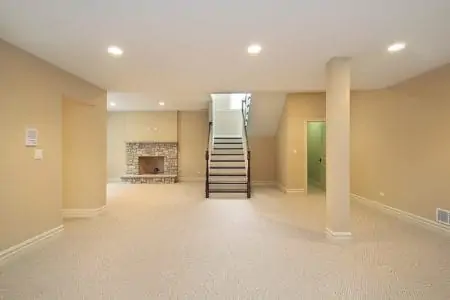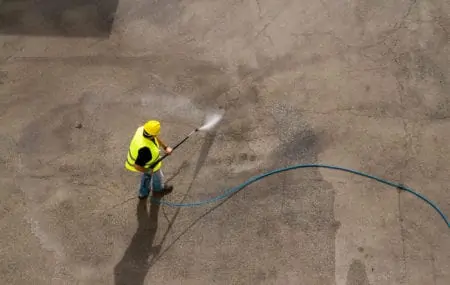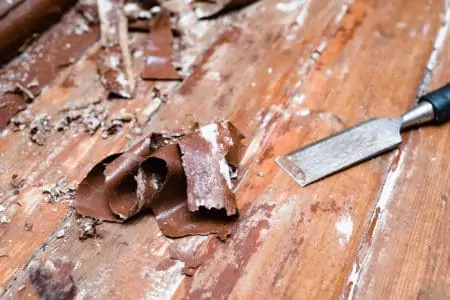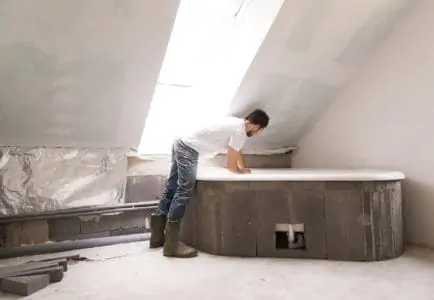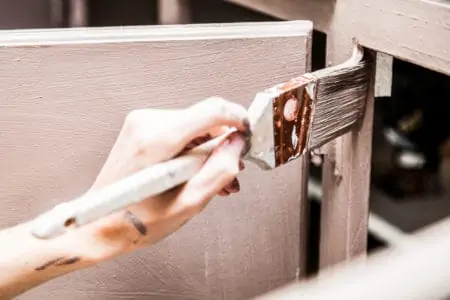Ever wanted to break free by starting a painting business? Losing a steady income and the uncertainty of a new startup can be risky. However, you could become your own boss with a few simple steps.
We show you how to start a painting business, including registering your new company and how to price a painting job.
Key Takeaways
- Starting a painting business can be profitable with low startup costs and high potential for growth.
- Experience is preferred but not required; learning techniques and creating a solid business plan are essential.
- Initial costs include equipment, transport, business registration, insurance, and marketing.
- Properly pricing painting jobs, building good relationships with subcontractors, and effective marketing are key to success.
- Is Starting a Painting Business a Good Idea?
- Can You Start a Painting Business With No Experience?
- How Much Does It Cost to Start a Painting Business?
- How to Start Up a Painting Business
- Do You Need a License to Start a Painting Business?
- How Do You Price a Painting Job?
- Tips for Starting a Painting Business
- FAQs
- Here’s to Your Success
Is Starting a Painting Business a Good Idea?
The painting industry in 2022 has adapted to the needs of a post-pandemic world. From virtual estimates and rising material costs to labor demands, starting a painting business is not without its challenges.
But that doesn’t mean it’s a terrible idea. If you are creative, have ambition, and want to see a greater return for your efforts, then it could be a great idea.
Imagine the perks of being your own boss. No one to answer to, and you get to make the decisions.
Before you knock on your boss’s door with a resignation letter that lets them know exactly what you think, let’s look at the pros and cons.
Pros
- Low startup costs.
- Large market potential.
- High profit margins.
- Be your own boss.
- Make decisions for yourself.
- Set your prices.
Cons
- It takes a lot of effort.
- Returns may not be immediate.
- Increased uncertainty.
- Lots of responsibility.
- Work can be seasonal.
- Lots of competition.
- Risk of potential failure.
Can You Start a Painting Business With No Experience?
Experience is always preferred, especially when starting a new business, but it is still possible to succeed without prior painting knowledge. There is a low barrier to entry into the industry, and you can learn the ropes along the way.
That said, the better your technique, the happier your clients will be, and word of mouth is one of the most powerful advertisements for any new company.
Before you make that leap to independence, it’s always a good idea to get in a little practice. Start by decorating your home or the house of a neighbor or friend. YouTube is another valuable tool to learn specific methods and techniques.
You have to be a fast learner and create a solid business plan. Keep it realistic, and set six months, yearly, and five-year goals. Your new business consists of several elements: painting quality, getting new customers, satisfying existing customers, and marketing.
You also need to be an accountant, keep control of budgets, and know how to quote for new painting jobs accurately. So, you can see that starting a new painting business is not just about painting. And yes, you can succeed with no experience.
How Much Does It Cost to Start a Painting Business?
Assuming you are starting from scratch, the costs vary depending on how much you want to spend initially. If we are looking at startup costs, we need a breakdown of tools and materials.
Ladders
You will need internal and external ladders. A 28-foot ladder could set you back $400, while a 12-foot ladder, like this Yvan Retractable model, costs around $150. You may also need a decent multi-position ladder; this Little Giant Multi-Position Ladder is a great example.
Brushes, Rollers, and Sprayers
High-quality tools are a must for any professional painter, including brushes, rollers, and sprayers. A thin-angled brush will set you back $10, while a wider brush could cost between $20 and $30.
Paint sprayers give an even coating and speed up any painting project. This Graco Magnum Project Plus is a popular choice with professionals. You will need to allocate $300 to $400 for a decent model.
Tools deteriorate with use, especially paintbrushes and rollers, so you will need to factor in replacement costs.
Paint
You should expect to pay between $30 and $70 for high-quality paint and roughly the same price for primer. This KILZ Interior and Exterior Primer effectively blocks stains and seals the surfaces for the paint to bond.
You may be able to set up business accounts with hardware stores and get a discount, or they may offer bulk-buy reductions. However, don’t be tempted to fill your storeroom with paint because it ties up your capital.
You should get 350 to 400 square feet of coverage, depending on the quality of the surface. So, a typical room will take two to three gallons, while a 1,500 square foot exterior surface will need 10 gallons.
Take Note
The quality of the paint, type, and quantity needed is subject to the customer’s demands and may increase your costs.
Sundry Equipment
You will need to allocate about $100 for drop cloths, tape, plastic sheeting, and paint trays.
Transport
Unless you are going to cycle to each job, you will need transportation. You may have a car, but is it large enough to carry all your tools? If not, your single most significant expense will be a van.
You could splash our $30,000 on a new set of wheels or pick up a second-hand bargain. You will also need a ladder rack, costing $200 to $300.
Business License, Permits, and Insurance
It’s a little tricky to pin down prices because they vary by location. Different rates apply to each city, county, and state. A safe guesstimate is between $50 and $400.
Marketing
Marketing can cost the earth or no money at all. Social media is the cheapest place to advertise your services, and you can opt for paid adverts that target your specific audience.
Allocate between $50 and $100 for marketing costs, but they could increase if you throw in the price of leaflets, banners, signwriting on your new van, and business cards.
| Startup Breakdown | Costs |
| Ladders | $150 to $400 (this could increase depending on the model). |
| Brushes, rollers, and sprayers | $10 to $400 |
| Paint | $30 to $70 |
| Sundry equipment | $100 |
| Transport | $10,000 to $30,000 (this could increase depending on the model). |
| Marketing | $50 to $100 |
How to Start Up a Painting Business
So, you’ve made up your mind that going solo is for you. However, making the decision is one thing, but actually setting the wheels in motion is another. How do you make that dream a reality?
Financing Your Business
Your new company needs financing. You might have spent the last five years saving for this very day and have a healthy stash to get you started. However, most startups seek finance to get them off the ground.
You will need to seek advice from your bank, and they will probably offer the best rates. If not, shop around for the most preferential loan rates. You can do this when you set up your business account.
Most banks offer business accounts but insist there is a minimum of $500 in the account. You will also need an employee ID number to open a business account. You can get an EIN (Employer Identity Number) free from the IRS on their website.
You might want a card processor that charges fees per transaction, but you don’t need one. You can give your clients your business account and have them transfer payment directly to your bank.
Branding Your Business
Getting the branding right is crucial. Most decorators use their name as a company title. You don’t need an expensive logo; just a simple name will suffice.
You will also need a detailed business plan; the more research you conduct, the better prepared you are. Your plan should have short-term, medium-term, and long-term goals. We recommend six months, yearly, and five-year targets.
Be realistic rather than setting the goals too high. They need to be achievable because you can quickly become deflated if you continually miss them.
Know your competition, what they charge, and the quality of their work. Ask friends and neighbors who they used and whether they were satisfied. Speak to other painters, and don’t be afraid to ask what the market is like.
Use the internet to research different companies. Look at their branding, do they have uniforms, and what are their testimonials like?
Buying Equipment
If you are already in the industry, you will have the necessary tools and equipment. However, you will need to source ladders, paint, rollers, sprayers, and transportation if you are a beginner. Luckily, starting a new painting company has lower initial costs than other small businesses.
You will need some capital to get equipment, and that either comes from your savings or a bank loan. Shop around for the best loan rates.
Marketing Yourself
Some people are hooked on social media, which happens to be the best place to prospect for business. Join local Facebook groups because people often reach out to painters. Use paid promotions to target the right audience.
A great way to get your name out there is to post leaflets through doors. It may be less targeted, but if you drop 1,000 leaflets, possibly one of two homeowners will call you for a quote.
Top Tip
Get a couple of quotes from local firms to see how they approach pitching for the work. You will quickly spot the slick ones and get tons of tips.
Offer initial discounts if your new customers can recommend another client. Ask to display your advertising billboard outside their home while you do the work. Take out adverts in local papers, and ask if you can put flyers in local shops.
Other ways to prospect for business include:
- Google ads.
- Craigslist.
- HomeAdvisor.
- Yelp.
- Car signs.
- Lawn signs.
- Referrals.
- Billboards.
- Local realtors.
Do You Need a License to Start a Painting Business?
You don’t need a license for your new painting business in most states, but you need to register it with your local state secretary. This page will tell you all you need to know for states requiring a license.
Take Note
Some states, like California, require you to pay a franchise tax.
How to Register a Painting Business
Simply Google “business registration” to find the details of your state secretary. The whole process of registration takes about 15 minutes online.
The costs vary from state to state, ranging from $50 to $400. You need to renew the registration every year.
You also need insurance, which again varies in cost from state to state. The price for a small startup varies from $600 per year to $3,000 for larger companies. That should give you liability cover of up to $1 million.
How Do You Price a Painting Job?
Now the time has come to speak to your first customer and price up their painting job. But how do you arrive at a price in the first place? You can’t just pluck a figure out of the air and hope for the best.
Remember that you already have the tools, so all you need to do is price for the materials.
Painting Interior Rooms
- Estimate the costs of painting materials. It could be as low as $30 minus the paint for a 400 square foot room.
- Estimate the paint costs. The average paint costs between $30 and $70 per gallon, and one gallon coats 400 square feet.
- Calculate the cost of primer. Most primers will cost $30 to $79 per gallon, and you get 300 square feet of coverage.
- Measure the room’s surface area, multiplying the length by the width. This gives you the square footage.
- Measure the square footage of each window and door and subtract it from the total, and you have the surface area calculation. This is subject to the number of coats required.
- Estimate the labor costs by visiting the site and calculating how long the job will take.
- Include your overhead costs. These usually include office rent, insurance, tax, equipment, fuel, and travel time. Ten percent of the total costs would be a good rule of thumb.
- Add the different costs together and add on your mark up for the profit margin.
If you have employees or subcontractors, you will need to calculate the labor costs differently. Multiply the time spent on the job by the number of people working on the project. Then add on worker’s tax, employee-related expenses, and wages.
This typically adds 20 to 25 percent to the final quote. Here’s an example: 32 labor hours at an hourly rate of $30 gives you a total labor cost of $960.
Painting House Exteriors
Follow all the instructions for pricing an interior room paint job, with one difference: the paint costs. A gallon of exterior paint costs $25 to $80 per gallon, and one gallon covers about 300 square feet.
Stucco takes twice as much paint as vinyl because it has a greater surface area. The quality of the surface makes a big difference to coverage, so you might only get 250 square feet of coverage per gallon. If that’s the case, it will increase the costs significantly.
Here’s a handy chart:
| Square Feet | Gallons | Total Costs (Based on $50 Per Gallon) |
| 1,500 | 5 | $250 |
| 2,500 | 8 | $400 |
| 4,000 | 12 | $600 |
Tips for Starting a Painting Business
Starting a painting business is daunting enough, especially with no experience, so getting hints and tips is always welcome.
Don’t Overpay Sub-Contractors
If you are trying to establish a working relationship with subcontractors, they almost always give you their highest price. This is because they don’t know you or how you work.
There’s also the element of “taking you for a ride” because they want to see if you know what you’re talking about. It will take a couple of projects before establishing trust and mutual respect.
Follow These Three Rules
Overpaying for subs may be bad, but breaking one of the following rules is even worse.
- Always pay on time (never pay late, or you will lose good workers).
- Fulfill your promises (or you’ll develop an untrustworthy reputation).
- Always be honest about the work involved.
If you follow these rules, you will gain the trust of some of the most talented and reliable painters in the business.
Restrict Spending
It can be tempting to spend a lot of money on the latest gear and gadgets when you first start. Don’t do it because these little purchases soon eat into your budget and profit margins.
Keep your spending under control and buy the essentials like paint, brushes, and rollers. If you follow the advice in the section above, your reliable sub-contractor will have their equipment anyway, which further reduces your costs.
Don’t Sell Yourself Cheap
Know your worth and charge your worth when bidding for work. Almost 90 percent of the time, potential clients buy into you rather than your quote price. If there is a 10 percent difference in your price to a competitor, they may still hire you because they liked you.
People buy from people, so don’t be tempted to slash your expenses because you may end up running at a loss.
Do Your Homework
Take the time to visit the worksite and examine what is in store for you. If you miscalculate, that $300 budget for paint could increase to $1,000 just because you had to apply four coats instead of two.
You could also lose valuable people because they will get fed up and walk off-site, especially if the job takes longer than expected. Remember that subcontractors have other clients and spread themselves among several projects.
FAQs
Here’s to Your Success
Knowing how to set up a painting business is crucial if you want to be successful. It doesn’t just happen by accident; it takes planning, patience, and a lot of hard work. Whether you want a one-man or woman operation, or an empire, going it alone can be very rewarding.
So, if you have itchy feet and feel like life owes you more, maybe you should break the chains of employment and set up that painting business.

